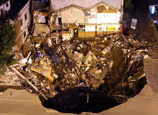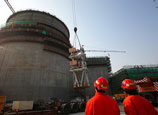
Otaru is a port city in Hokkaido, Japan. There are some rustic old warehouses which were built one century ago on the riverside of Otaru canal leading to the Sea of Japan. The port links Japan with foreign counties, however, it once became a place with few visitors after the booming of 70 or 80 years.
Japan had enjoyed an annual GDP growth rate of 5 percent about 40 or 50 years ago. Otaru local government and the people from the local business circles planed to cover up the useless canal, remove the old warehouses to build a wide road, so as to have a convenient way for transportation. However, some painters and school teachers were so sad when they saw the ruined canal, so they spontaneously organized an activity to protect the canal, which created a great sensation in Japan at that time.
Finally, the citizens won and the canal was preserved. Nowadays, vibrant Otaru booms in tourism, with 10 million tourists coming. Thanks to the survival of the canal and those old warehouses, they have become the place to collect, exhibit and exchange historical memories.
The former old warehouses have become the origin and symbolism of the city’s existence. They warm the heart of the people at present, which makes the citizens feel at ease with the historical backer.
As a matter of fact, this is not new for Chinese tourists. The 798 Art Area in Beijing and Dongjiao Memory in Chengdu are both reinvented by old factories.
Nowadays a large number of old buildings are always replaced by the modern ones in cities. Do you know how many cities are not able to preserve the old buildings from bulldozers? Sometimes, paying attention only to today will make people ignore the humanistic feelings, get rid of the familiar scenery and even disregard the rich history.
In fact, others also experienced the same confusion in the process of modernization.
Read the Chinese version: 且让城市留住昨天; Source: People's Daily; Author:Li Wangbing
















 Buildings collapse after subsidence in S China
Buildings collapse after subsidence in S China


![]()
